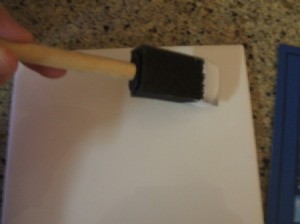
5 HEALING HONEY INFUSIONS FOR A HEALTHY LIFE
Formula for infusing your honey: Use 1 cup of honey (raw and organic is best), flavoring to your taste, a saucepan, strainer, and an 8 oz. glass jar with a tightly fitting lid.
1. Lemon-Honey:
You will need…
-1 cup of honey
-1 tablespoon grated lemon peel
-2 fresh slices of lemon, juice and tossed in (optional)
Directions
Pour 1 cup of honey into your pan and add 1 tablespoon of freshly grated lemon peel. Toss in 2 slices for boosted flavor if you like. Heat these together for about 10 minutes, making sure to keep the heat relatively low. Burned honey does not taste as bad as some other things do burned, but you still want to avoid it. Around 115 degrees Fahrenheit releases the flavors nicely, but it will depend on your stove top. After you have heated the mixture, let it sit for 1-2 hours or up to 1-2 weeks. After its infused strain if you’d like, and place in a glass jar with a tightly fitting top. Know the longer it sits for the stronger it will taste
.Good to use: If you have a bad cough or cold, place a healthy dollop of your lemon infused honey at the bottom of a cup. Pour freshly boiled water over the top, drop in a teabag, and give it a good stir. The lemon can loosen phlegm, while the honey soothes irritation. You can also slowly heat the lemon infused honey while adding the juice of one freshly squeezed lemon. When it’s still hot and liquid, sip slowly.
2. Cinnamon-honey:

At the state fair one of my favorite things has always been in the horticulture building. It’s the exhibit on bees and honey, where you can purchase just about any flavor honey stick you can imagine (seriously.) My favorite, having a soft spot for cinnamon, was always…cinnamon. This flavorful spice complements honey well not only in taste but in function, being filled with all kinds of healthy benefits
You will need…
1 cup of honey
4-6 sticks of cinnamon
A pinch of ground cinnamon (optional)
Directions
I am crazy about cinnamon, so I tend to add it generously, but try starting with 4 sticks if you’re unsure. Pour 1 cup of honey into the saucepan, and drop in the cinnamon sticks. Push them down with a spoon to submerge them. For 10 minutes on low heat let the mixture heat up, and then let it sit for around 2 hours or up to 1-2 weeks. Strain if you’d like and store in glass jar.
Good if used: In tea, just like the lemon-honey, or eaten straight off the spoon. It’s also delicious spread on a plain piece of toast. Cinnamon is chock full of anti-oxidants, possesses anti fungal properties, and helps break up congestion and clear the sinuses. Even just a half a teaspoon a day has been shown to
lower cholesterol levels.
3. Ginger-honey:
Tasty, but more importantly, good for your health. From colds to sore stomachs, ginger-honey comes with a variety of ways to enjoy its unique composition.
 You will need…
You will need…
-1 cup of honey
-1 tablespoon finely chopped ginger root
-A pinch of ground ginger (optional)
Directions
Pour 1 cup of honey into a saucepan and add 1 tablespoon of finely chopped gingerroot. You can add a small pinch of ground ginger if you’d like as well, but it does have a strong flavor. On low heat let the mixture sit for 10 minutes. When it’s done let it infuse for 2 hours or up to 2 weeks in a glass jar with a tightly fitting lid. Strain when it’s finished if you’d like.
Best used: In your tea when you’re feeling ill-especially with an
upset tummy, since both ginger and honey are known to soothe your stomach and chase off “bugs.” The added ginger helps circulation, flushing toxins through your systems and helping get rid of aches and chills. If you’re in a pinch and have wound up with a minor abrasion, applying this cooled and then covering with gauze can help it heal , and the ginger fights inflammation.
4. Clove-honey:
Not to be confused with clover honey, clove honey is made by infusing whole cloves with honey, whereas clover honey is made from the nectar of clover flowers. Cloves are great at numbing pain (sore throats, toothaches, etc.) and the honey makes a happy, healthy, medium to ingest it with.
You will need…

-1 cup of honey
-5-10 whole cloves
Directions
Pour 1 cup of honey into a saucepan, and then add 5-10 whole cloves. On low, heat for 10 minutes before letting it infuse for 2 hours or up to 2 weeks, putting it in a jar with a tightly fitting lid. Strain when it’s finished if you’d like.
Best used: In tea when you have a sore throat or a
toothache, or dabbed directly on the gum by a sore tooth. The eugenol in the clove is a powerful numbing agent that was used by dentists before modern painkillers were created, and is so effective it is still used in modern dentistry in an extracted form. If you have a little cut or sore in your mouth, the honey may help it heal faster and keep bad bacteria out while the cloves take care of the discomfort.
5. Apple Cider Vinegar honey:
If you’re worried about taste, this may not be the honey to put on a sandwich and give to the kids (although personally, I think the ACV cuts through the sweet honey nicely.) Apple cider vinegar is a substance that seems to help just about every ailment out there- add this wondrous liquid to the super-hero that is honey, and you have a flavorful spread that’s brimming with healthy benefits.
You will need…

-1 cup of honey
-2-3 tablespoons apple cider vinegar
Directions
Add 1 cup of honey to a saucepan, and then pour in 2-3 tablespoons of apple cider vinegar. Let it heat over low heat for 10 minutes, stirring well about halfway through. Place in a jar and let it sit for as long as you like-its taste and benefits are all there pretty quickly, and it does not need to sit as long as something like cinnamon sticks or cloves would.
Best:If you make the Braggs apple cider vinegar health drink you can try adding this for an extra kick. While this is subject to opinion, I think it tastes good stirred in to tea or a glass of lemon water in the morning. Apple cider vinegar can help neutralize and correct excess acidity in our bodies (counterintuitive, but often times true) and helps a number of issues from an upset stomach to easing sore throats to showing promise in treating diabetes.
Pinned from: www.everydayroots.com Courtesy of: hummingbirdjewelry1.etsy.com FYI




 Many Uses For Christmas Cards:
Many Uses For Christmas Cards: 2. COVER THE TILE WITH A LAYER OF MODGE PODGE.
2. COVER THE TILE WITH A LAYER OF MODGE PODGE.  3. PLACE THE IMAGE OVER THE MODGE PODGE.
3. PLACE THE IMAGE OVER THE MODGE PODGE.  25 WAYS TO USE PEPPERMINT ESSENTIAL OIL –
25 WAYS TO USE PEPPERMINT ESSENTIAL OIL – 
 USE BORAX TO KILL INSECTS
USE BORAX TO KILL INSECTS

 Of course this was number one. Lemon + honey = amazing. When you come down with any sort of cold, putting lemon and honey together (in tea or otherwise) is a go-to for making you feel better.
Of course this was number one. Lemon + honey = amazing. When you come down with any sort of cold, putting lemon and honey together (in tea or otherwise) is a go-to for making you feel better. At the state fair one of my favorite things has always been in the horticulture building. It’s the exhibit on bees and honey, where you can purchase just about any flavor honey stick you can imagine (seriously.) My favorite, having a soft spot for cinnamon, was always…cinnamon. This flavorful spice complements honey well not only in taste but in function, being filled with all kinds of healthy benefits
At the state fair one of my favorite things has always been in the horticulture building. It’s the exhibit on bees and honey, where you can purchase just about any flavor honey stick you can imagine (seriously.) My favorite, having a soft spot for cinnamon, was always…cinnamon. This flavorful spice complements honey well not only in taste but in function, being filled with all kinds of healthy benefits